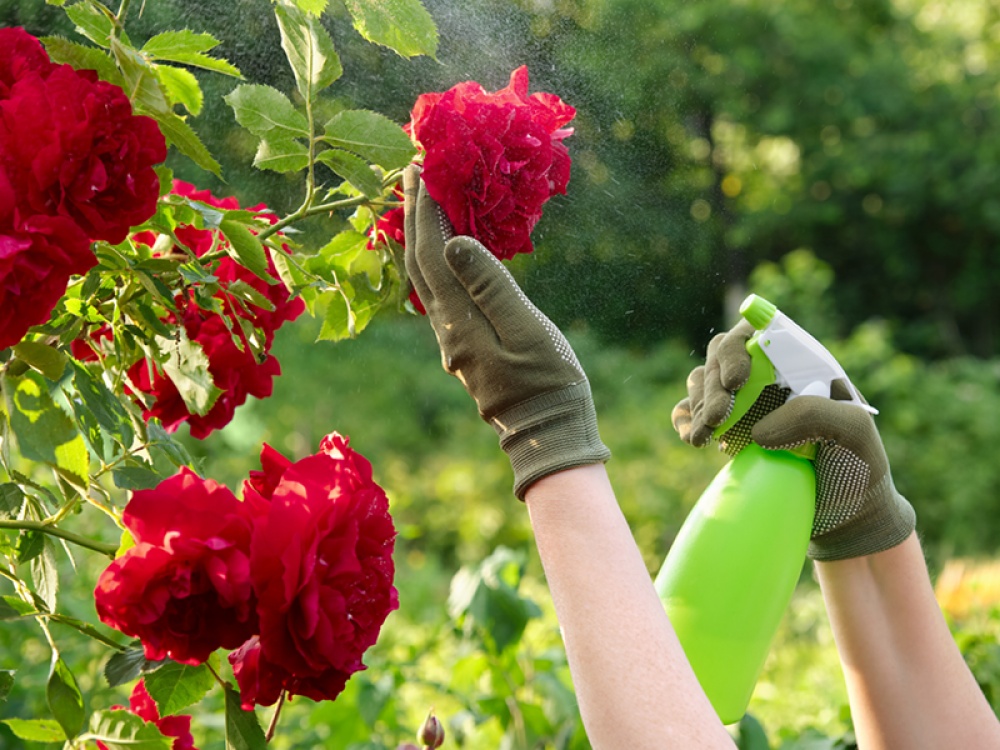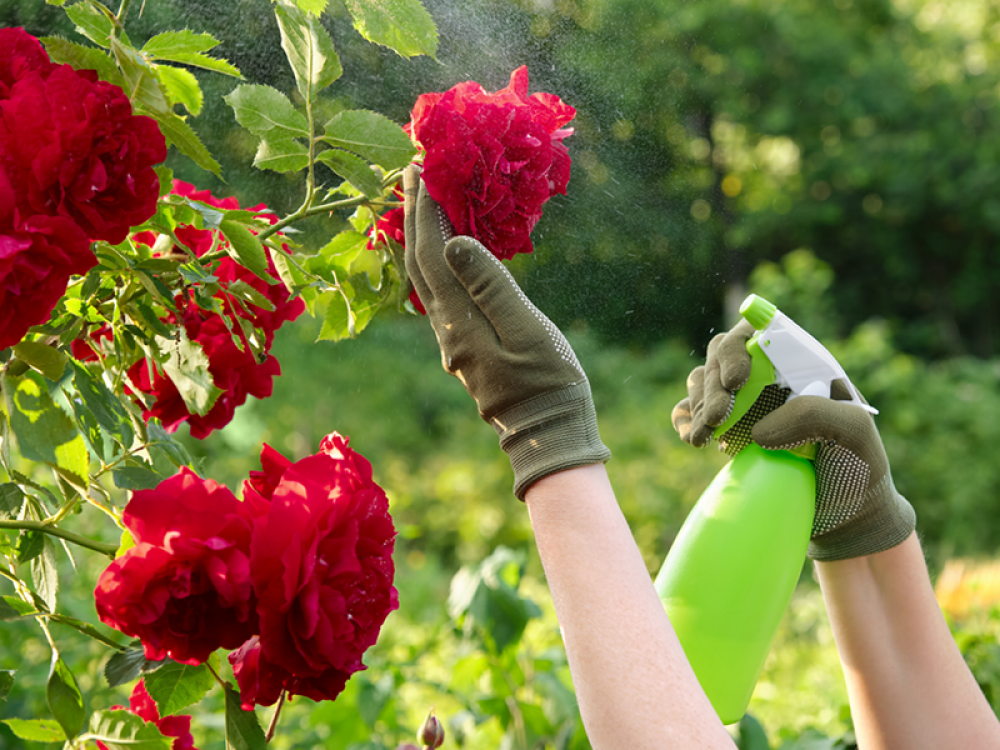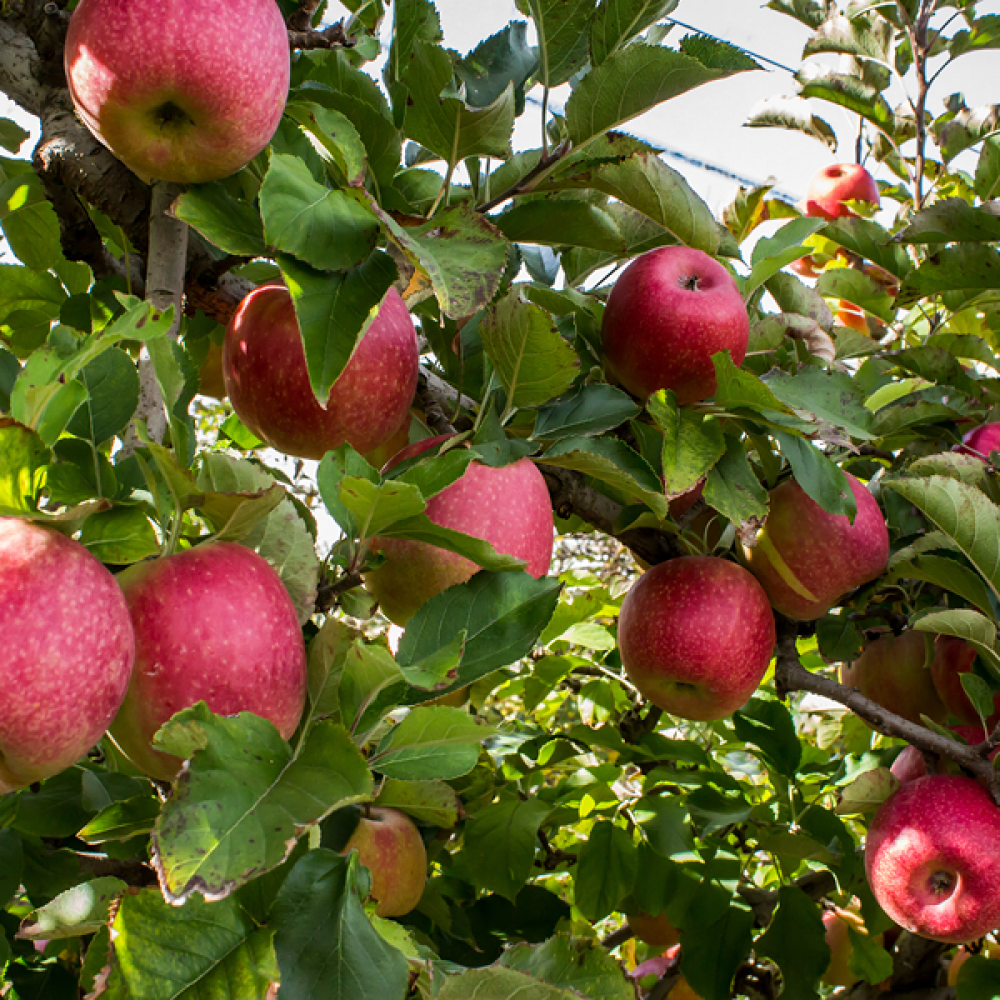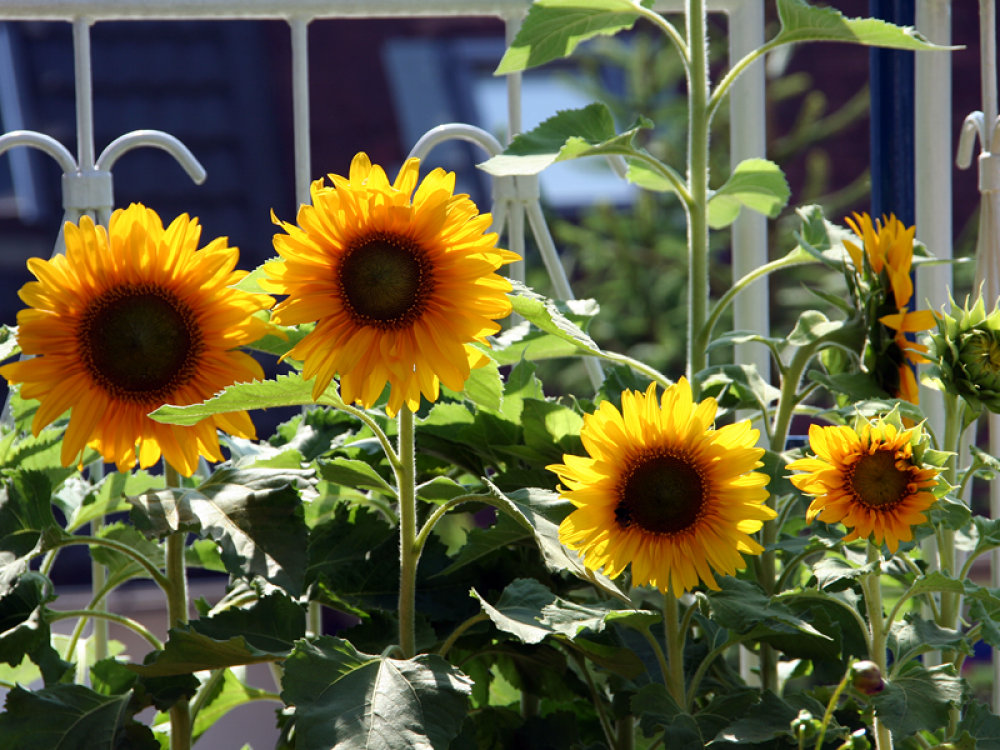What to Do When Garden Pests Also Love Your Favourite Plants

Because there's such a thing as being too popular

Roses
You’re likely to find roses in most well-established English gardens, and as beautiful as they are, they are unfortunately renowned for attracting a few unwanted pests. Aphids, Japanese beetles, and spider mites are the most common pests you’ll find around your rose bushes and plants.
Aphids in particular can have a pretty disastrous effect on plants, sucking the sap from the stems and causing things such as discolouration, leaf curling and even stunted growth. Unfortunately, aphids are attracted to more than just roses, so chances are, they will likely spread to other areas of your garden. Large infestations of aphids can result in a sticky residue called honeydew to build up on the plants' stems, attracting ants and fuelling the growth of fungus.
Japanese beetles are an aggressive pest, and they are highly attracted to roses, devouring the bush from top to bottom and eating the tissue between leaf veins. These beetles also release a pheromone that attracts more beetles, so if you spot the beginning of an infestation, you need to act fast.
Whilst tiny, spider mites can cause some very obvious damage to roses. Feeding on the underside of the leaves, spider mites pierce the leaves sucking out the chlorophyll-containing fluids from leaf cells, causing the leaves to turn a brown/bronze colour.
There are a couple of ways you can tackle all of these pests. The first is using neem oil, which is a natural alternative to chemical pesticides. To protect the good bugs and the bees (neem oil is toxic for them) spray the leaves of your rose bushes and plants in the evenings when these good insects are least active. Continue this daily until the pests are gone!
You can also try to introduce natural predators of these pests to the area, such as ladybirds. These bugs will help to kill and control common pests such as aphids. You can also plant other plants such as marigolds, and alyssum to invite hoverflies into your garden; these again will control unwanted pests, whilst also pollinating!

Vegetables
For those of us that like to grow our own fruits and vegetables, pests are unfortunately a regular battle. Common veggies, such as cucumbers and tomatoes, will encourage the presence of whiteflies and tomato hornworms.
Whiteflies are fast breeding pests that gather on the underside of the leaves, sucking the sap and weakening the plants. If infestations are particularly bad and out of control, they can ultimately cause the plant to die.
Tomato hornworms are hungry little pests that, if given the chance, could completely decimate a tomato plant within a day. They chew on both the leaves and the fruit of tomatoes and other solanaceous plants.
To deter pests from your vegetable garden, I recommend rotating crops annually to prevent soil-borne pests and diseases from becoming well established. To protect plants against pests above ground, use covers made of a lightweight, permeable fabric. This will protect your vegetables from a wide range of pests while still allowing light, water, and air to reach the plants.
To get rid of whiteflies in particular, spray your plants with a hose to scatter adults and dislodge the pupa and eggs. Young white flies cannot crawl and die without access to their food source. To stop the adults from returning to your plants, treat them with neem oil as soon as you have removed the flies from the plant.

Fruit Trees
Fruit trees such as apple and cherry trees, are most common in home gardens and can be a joy to have and harvest from. However, the persistence of pests such as codling moths and fruit flies can greatly impact the joy you get from your trees.
Codling moths will lay eggs that hatch into larvae. These larvae will then burrow and feed on the inside of the fruit, leaving tunnels and excrement behind, thus making the fruit inedible. One way to prevent these pests is to scrape away any loose bark in early spring to remove overwintering cocoons.
Female fruit flies seek out fruit to lay their eggs, and once they do so, the eggs hatch within a matter of days and immediately begin spoiling the fruit and causing it to rot. Fruit fly infestations can grow quickly, and therefore you need to keep on top of protecting your plants if you want to avoid a spoiled crop!
Bagging your fruit is a great way to protect it against a range of pests.You can use a light mesh bag or even create a bag by stapling newspaper together – these will stop pests from being able to get to the fruit.
Another way to avoid unwanted pests is by choosing disease-resistant fruit tree varieties and rootstocks that are suited to local climate and soil conditions. Planting the right variety can significantly reduce vulnerability to pests. You should also regularly prune fruit trees to remove dead or diseased wood and to maintain an open canopy. This improves air circulation and sunlight penetration, reducing the habitat for pests and promoting healthier tree growth.

Sunflowers
Whilst they are very beautiful flowers, sunflowers attract several pests into your garden right from their seedling stage.
Wireworms and sunflower beetles are the most common consumers of sunflowers, wireworms feed on the developing seedling which will often die before it emerges or, if it does, wilt soon after. Sunflower beetles, however, will feed on the leaves of sunflowers.
Sunflower beetles tend to be hand picked from plants, as opposed to using any chemicals, whilst wireworms can be washed off. If you find that they keep returning, then you can treat the plant with neem oil to keep them away.
Aphids are another common pest, but planting a variety of flowering plants such as Alyssum around your sunflowers can attract natural predators such as ladybugs, and wasps, which feed on them and other small pests.
Petunias, marigolds, chrysanthemums and even catnip can help to cut down on beetles and aphids. Chrysanthemums are a natural source of one of the world’s safest and most effective types of pesticide – pyrethrins, so these are a great option!










